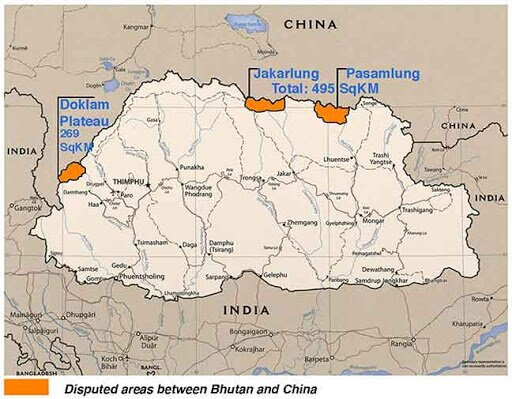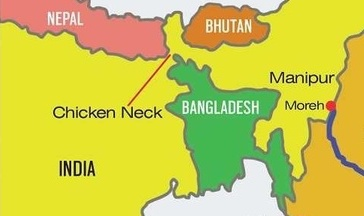In News: China offered Bhutan a “package solution” to its boundary dispute, reviving a reference to its 1996 proposal for a territory swap to give Bhutan the disputed areas in its north in exchange for the disputed western areas, including Doklam.
Territory Swap
- Since 1984, when China and Bhutan began talks, the areas of dispute have only included Pasamlung and Jakarlung valleys to the north area, and Doklam and other pasturelands to the west.
- The eastern boundary of Bhutan, which borders Arunachal Pradesh, has never been in contention.
- After the 11th round of talks in 1996, Bhutan’s 4th King Jigme Singye Wangchuck had informed the Bhutanese National Assembly that China “wanted to exchange the valleys to the north, with an area of 495 square kilometres, with the pasture land to the west, totalling 269 square kilometres.”
- The deal would have benefited Bhutan by giving it the larger chunk of land, and resolving its tensions with China, but was a big worry for India, as the Doklam swap would give the People’s Liberation Army (PLA) access to the strategically sensitive “chicken neck” of the Siliguri corridor.
Repeated Claim Over Sakteng
- China also repeated its claim on Bhutan’s eastern boundary at Sakteng. Earlier, China has made the claim over Sakteng at an online meeting of the Global Environment Facility (GEF) Council, while unsuccessfully objecting to the funding request to develop the Sakteng Wildlife Sanctuary project in eastern Bhutan.
- China claims that the boundary between China and Bhutan has never been delimited. It has had disputes over the eastern, central and western sectors of Bhutan. Bhutan outrightly rejected the claim made by China by saying that Sakteng is an integral and sovereign territory of Bhutan.
- According to Bhutan, China and Bhutan have a dispute in only two sectors of the border, one in the north (central) – Pasamlung and Jakarlung, and second in the west – Doklam.

Chicken Neck
- North East India is connected to the Indian mainland by a small corridor Siliguri Corridor also known as Chicken Neck
- With a narrow width of only 23 kilometers
- Strategic Importance of the region
- About 99% of the 6387 km border of this Region is international border along Bangladesh, Myanmar, China and Bhutan.
- It makes up close to 40% of India’s land borders with its neighbors.

















